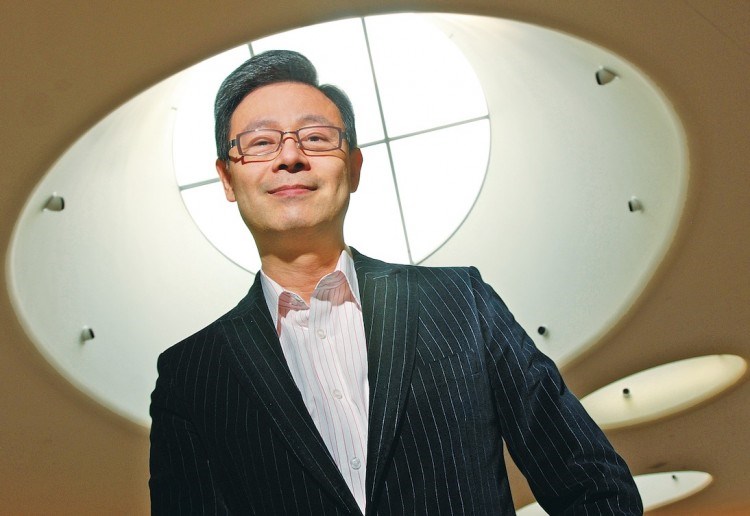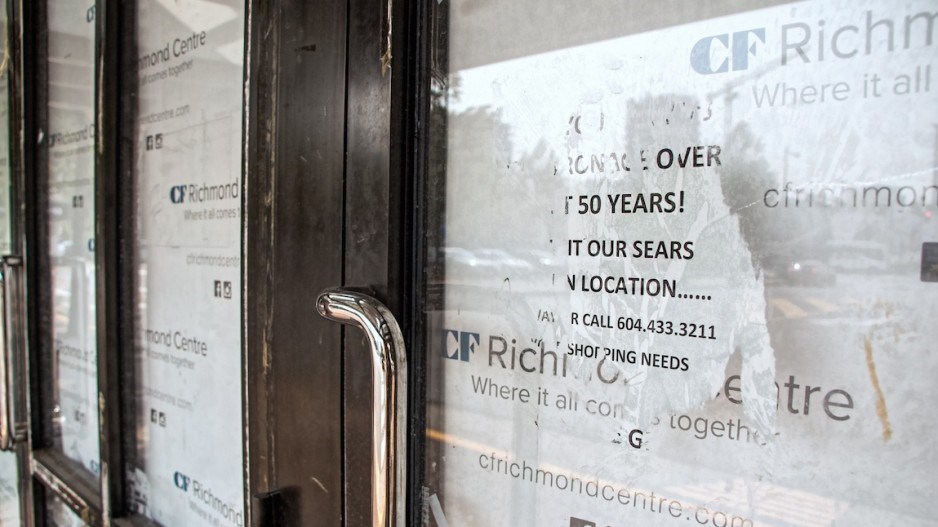Shopping centre owners are relying less on large department stores and more on innovative community events and a diverse range of compelling small tenants to attract shoppers, as e-commerce continues to transform consumer behaviour.
It is a natural progression, given the recent collapse of Sears Canada – a shutdown that earlier this year closed the last 189 Sears, Sears Home or Hometown stores.
Forward-thinking mall owner Cadillac Fairview, in 2015, twigged to the likelihood of that chain’s collapse and bought out Sears Canada’s lease on 110,000 square feet at the south end of Richmond Centre.
Tom Knoepfel, Cadillac Fairview portfolio manager for Western Canada, told BIV in December that his company could do “something different from just the existing box,” but nothing has been announced, and the space remains shuttered.
Knoepfel told BIV earlier in August that suburban malls such as Richmond Centre face challenges that are significantly different from the relatively problem-free situation at Cadillac Fairview’s other large B.C. mall: downtown Vancouver’s Pacific Centre.
“Pacific Centre is a bit different because it is a large urban centre, as opposed to what’s viewed as a typical shopping centre in Canada,” he said.
Retail analyst and Retail Insider Media owner Craig Patterson agreed that suburban malls have a bigger challenge attracting shoppers than do downtown malls.
“You don’t need an anchor as long as you have a compelling mix of stores and a downtown location. People are already downtown. An anchor may even be distracting.”
He added that the trend in recent decades has been to have larger food courts, restaurants and service-oriented businesses. The key is that the businesses draw visitors who also want to spend money elsewhere in the mall.
Patterson and Colliers International’s retail-consulting head and vice-president, Jim Smerdon, have mixed views on gyms as good anchor tenants.
Smerdon told BIV earlier this year that they work best as a magnet for shoppers when they are part of a co-ordinated backfill program.
“[Gyms] generate foot traffic, but the key role of an anchor isn’t simply on-site volumes of people but of shoppers.”
However, Aberdeen Centre owner Thomas Fung believes gyms attract shoppers.
“I’m not in the gym business,” said Fung, who also owns many stand-alone stores and franchises in his mall, which has 380,000 square feet of retail space. “But it seems they are doing well. When I talk to other mall operators, they’d like to bring gyms in.”
Fung has long been averse to having large anchor tenants. He spent $100 million in 2003 to build his mall in Richmond to provide a collection of retailers not commonly found in other regional malls.

(Image: Aberdeen Centre owner Thomas Fung focused on having cultural events and themed attractions at his mall since Day 1 | Dominic Schaefer/BIV files)
Fung doesn’t have large big-box tenants in part because past negotiations have taught him that “they are really asking for the sky, and they don’t pay much rent, and they want to sign up for 20 years, 30 years and more.”
He has instead focused attention on his mall’s 4,000-square-foot central atrium, which is one of the region’s most popular meeting places during Chinese New Year.
Through the years, the site has also hosted things such as the large interactive dinosaur show, The Jurassic Alive, which included a 50-foot long, 22-foot high, 2.8-tonne mechanical Tyrannosaurus Rex that could swish its tail, roar and bear ferocious-looking teeth.
That atrium also housed a Lego display of Hong Kong’s Victoria Harbour skyline and a Pez Candy Inc. display of the Tower of London. It currently has on display a panda-themed exhibit that includes a 10-foot-tall origami panda, small plush pandas and panda-related art.
QuadReal Property Group’s Oakridge Centre has done similar things to attract shoppers.
Vincent van Gogh’s great-grandnephew, Willem van Gogh, visited the mall in 2016 to unveil an exhibit of replicas of the Dutch painting master’s works.
The mall now has on display a collection of luxury vehicles from brands sucn as Lotus, Lamborghini, Maserati, McLaren, Rolls Royce, Aston Martin, Bentley, Jaguar, and Range Rover.
“The role of having anchors has changed,” Patterson said. “It is no longer about having a large multi-brand store. It is now about having attractions that hopefully draws people in, and then also have them stay as shoppers.” •




